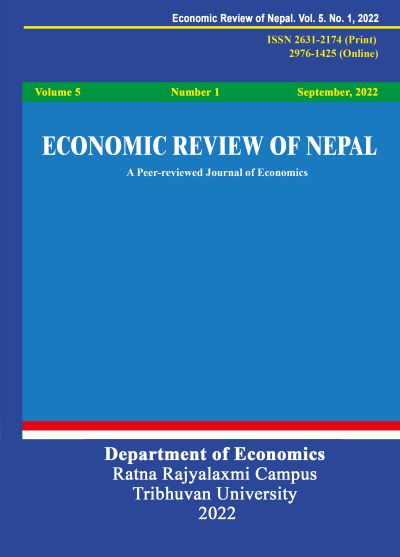The Relationship between Tax and Economic Growth in Nepal
DOI:
https://doi.org/10.3126/ern.v5i1.66040Keywords:
tax, economic growth, co-integration, ARDL model, NepalAbstract
This study examines the relation between tax and economic growth in Nepal for the period of 1992 to 2022. The study analyzes the existence of the long-run relationship between custom duty, excise duty, value added tax and micro economic indicator GDP at current price of the Nepalese economy. The study utilized time series data analysis, using annual data covering the period of 1992 to 2020 in Nepal. The empirical results of the study, using the ARDL model, highlighted the impact of different tax indicators on economic growth. Findings indicated that a long-run (but no short-run) relationship existed between tax and economic growth in Nepal. More specifically, the results show that the custom duty and value added tax has the negative impact on the economic growth in the long run. Similarly, the result excise duty shows that positive impact on the economic growth in Nepal.
Downloads
Downloads
Published
How to Cite
Issue
Section
License
Copyright (c) 2022 Department of Economics, Ratna Rajyalaxmi Campus

This work is licensed under a Creative Commons Attribution-NonCommercial 4.0 International License.
This license enables reusers to distribute, remix, adapt, and build upon the material in any medium or format for noncommercial purposes only, and only so long as attribution is given to the creator.




